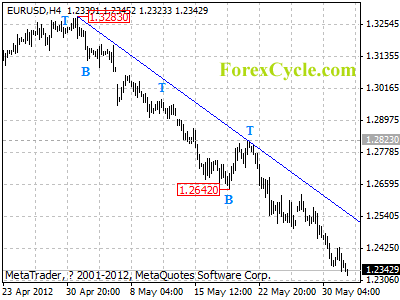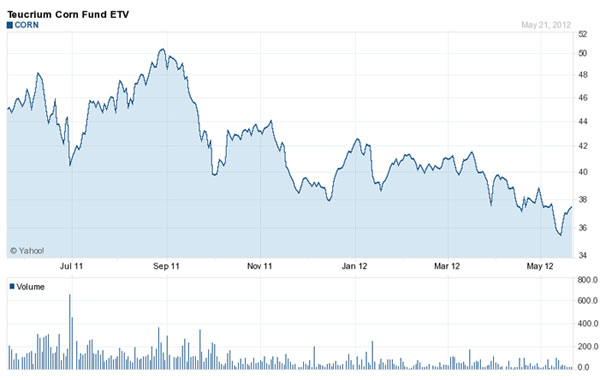Article by Investment U

Today's contributor is the famed economist, investment analyst, author, Ben Franklin impersonator and investment conference attendee, Mark Skousen.
“On Dec. 31, trillions of dollars in tax cuts will expire, trillions more in new tax hikes under ObamaCare will kick in, and a trillion in automatic spending cuts will begin.”
– Don Luskin, “Fiscal Cliff Could Crush Stocks,” Wall Street Journal, May 4, 2012
As an investment writer, I probably lead all other writers (including Alex Green!) in one category: attending investment conferences! My subscribers are constantly amazed at how often I am away from home attending a conference or visiting a new country.
I probably attend two dozen economic and financial seminars each year, including the Milken, SALT, Money Shows, New Orleans, Investment U, and of course my own big show FreedomFest. I’m constantly on the road. I’ve been to 72 countries and this week will travel to Warsaw, Poland and London, England to deliver several addresses on economics and finance.
Why do I do it? I firmly believe I’m a better economist and financial advisor by attending conferences and hearing what others have to say. In fact, I would argue that YOU will be a better investor by attending financial conferences too.
The Buzz at the Milken Conference
May has been especially busy with conferences. I attended in Beverly Hills the famous Milken Institute Global Conference, hosted by Michael Milken. The watch word I heard repeatedly about the U.S. economy was “fiscal cliff.” The huge debt load the United States is facing on top of the trillions in unfunded liabilities is indeed cause for alarm. A crisis is coming, and nobody is doing anything about it. It may hit as early as December, as Don Luskin warned in the Wall Street Journal (see quote above).
All kinds of big wigs were at the Milken event: former President Bill Clinton, California Gov. Jerry Brown, alternative energy promoter T. Boone Pickens, doom-and-gloomer Nouriel Roubini, Walter Isaacson (author of Steve Jobs’ biography), Harvard historian Niall Ferguson, and hundreds of CEOs from around the world.
I thought Niall Ferguson, the Harvard historian, stole the show. When a Keynesian economist said that state capitalism (e.g., China) seems to work better than free-market capitalism (e.g., the United States), Ferguson jumped in to show a dramatic chart that proved otherwise. Looking at government as a percentage of gross domestic product (GDP), the size of government in China is far smaller than in the United States! “China is moving away from state capitalism toward freer markets,” he said. “The United States is moving away from free markets toward state capitalism.” China is growing faster because they are adopting free market policies – a brilliant response!
Meanwhile, I also ran into Steve Forbes, who spoke on a panel about tax reform. He railed against the millionaires’ tax (The Buffett Rule) being proposed by President Obama (and supported by Jared Bernstein on the panel), contending, “You don’t raise taxes on the successful, especially during a weak recovery.” Amen!
Afterwards, Steve asked about my own conference FreedomFest, and I told him about all of the great debates and panels we have scheduled this year. “I can’t wait,” he said. Steve Forbes and Whole Foods CEO John Mackey are our official FreedomFest co-ambassadors. Hope you’ll join us. See more below…
SALT Conference: It’s All about Jobs!
Another conference I attended was the SALT conference, run by hedge fund manager Anthony Scaramucci, who just wrote an excellent primer, “The Little Book of Hedge Funds: What You Need to Know about Hedge Funds but the Managers Won’t Tell You.” Highly recommended.
Like Milken, Scaramucci invites a lot of big names to his conference, including Al Gore and Sarah Palin. I was able to attend only one day due to other commitments, but I was on a panel with Adam Lashinsky, senior editor at Fortune magazine, about his new book, “Inside Apple: How America’s Most Admired — And Secretive — Company Really Works.”
Steve Jobs’ last name symbolizes the challenges facing America today. The future of America is all about the job participation rate and the unemployment rate. The official unemployment rate is down to 8.1%, but that’s largely because millions of people have simply stopped looking for work.
According to a recent report, approximately 86 million people are invisibly unemployed in the United States. After peaking at 67.3% in early 2000, the labor force participation rate has been falling ever since.
In our panel discussion, Lashinsky denied the popular view that technology companies like Apple don’t create many jobs. Apple may not hire a lot of workers, but the products they produce (iphones, ipads, MAC computers, etc.) sharply increase productivity and create a higher standard of living and millions of jobs indirectly – I agree.
My “Surprise” Prediction at the Money Show
I also made numerous appearances at the Las Vegas Money Show, including a SRO private meeting with subscribers (thanks for coming). Investors were worried about the bear market on Wall Street and the never-ending debt crisis in Europe.
But I offered good news to attendees. I made the “surprise” prediction that Mitt Romney would win the Presidency in November and the stock market would roar on the news. This forecast goes counter to the odds makers at www.intrade.com, the political futures market, which currently shows Obama ahead of Romney, 58% to 42%. But over the past two months Obama has been gradually losing support and Romney has been gaining. Moreover, Romney could win if the economy continues to struggle (as I expect it will) and if Romney wins the presidential debates (iffy). Remember, Reagan was way behind Jimmy Carter in early 1980 and ended up winning by a landslide, largely due to economic worries.
Don’t get me wrong: I am not rooting for a downturn just to elect a Republican. But I want someone in office who understands business, and can turn things around.
Watch Intrade carefully. The political futures market is more accurate over the past election cycles than the national polls. The pollsters survey voters with the question, “If the election were held today, who would you vote for?” There’s no skin in the game and voters can lie. But in Intrade, voters are putting up their own money and betting on the question, “Who will win the election in November?”
Update on FreedomFest, “The World’s Best Conference”
Recently I attended one of those big corporate conferences out West and a well-dressed businessman came up to me from out of the blue and introduced himself. He said, “You don’t know me but my name is Tony and I’m from Phoenix. I just want you to know that FreedomFest in Vegas is by far THE best conference I’ve ever attended, and I’ve attended all of them.”
While Tony and I were talking, a young executive came up and introduced herself as Lenore Hawkins from San Diego. “He’s right,” she said. “I always come away inspired and looking to take on the world after attending FreedomFest. This year I’m bringing five friends!”
I know this story sounds like promotional hype, but it really happened.
In fact, it happens all the time. This year the Oxford Club (Alexander Green, Karim Rahemtulla, Marc Lichtenfeld and Steve McDonald) is hosting a one-day conference at FreedomFest. Other speakers include Peter Schiff, Rick Rule, and of course, Steve Forbes and John Mackey. They attend all three days! As Keith Fitz-Gerald says, “FreedomFest is the conference even speakers like to attend.” (Yes, he’s coming.) To see what all the excitement is all about, go here, or give Tami Holland a call toll-free 1-866-266-5101.
Good Investing,
Mark Skousen
P.S. We’ve just signed on two more high-profile speakers for FreedomFest – Robert Kiyosaki, author of “Rich Dad, Poor Dad” and G. Edward Griffin, author of “The Creature from Jekyll Island.”


Article by Investment U




